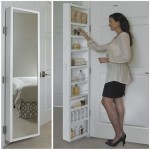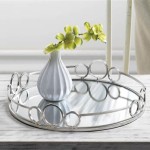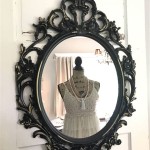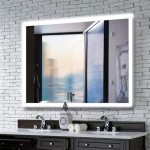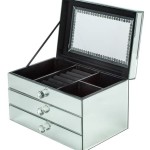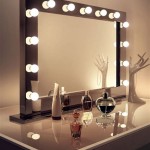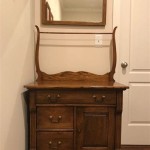Decorative Trim for Mirrors: Enhancing Style and Functionality
Mirrors are not just functional objects; they can be transformative elements that enhance both style and functionality in any room. Decorative trim is a crucial aspect of mirror design, offering a myriad of options to customize and complement the overall decor.
Types of Decorative Trim
There are various types of decorative trim available for mirrors, each with its unique aesthetic and application:
- Moldings: Moldings are traditional trim options that add a touch of elegance and sophistication to mirrors. They can range from simple beading to ornate carvings and come in materials such as wood, plaster, and polyurethane.
- Frames: Frames encase the mirror entirely, providing a dramatic and eye-catching effect. They can be made from various materials, including metal, wood, or intricate resin.
- Beading: Beading is a thin, decorative trim often used as an accent around the edge of a mirror. It can add a subtle touch of embellishment and help define the shape of the mirror.
- Appliqués: Appliqués are decorative ornaments that can be attached to the mirror's surface. They come in diverse designs, such as floral motifs, geometric patterns, or animal figures, to add an extra layer of interest.
Material Options
Decorative trim for mirrors is available in a wide range of materials, each offering distinct advantages:
- Wood: Wood is a classic choice for trim, providing warmth and natural beauty. It comes in various species, from oak and mahogany to pine and maple, to match any decor style.
- Metal: Metal trim adds a touch of modern elegance and durability. It is available in various finishes, including brushed, polished, or antiqued, and can complement contemporary or industrial interiors.
- Resin: Resin is a versatile material that allows for intricate designs and details. It is lightweight, making it easy to install, and comes in a wide array of colors and textures.
- Plaster: Plaster is a traditional material that has been used for decorative trim for centuries. It is relatively fragile but adds a timeless and authentic touch to mirrors.
Matching Decor Style
When selecting decorative trim for mirrors, it is important to consider the existing decor style of the room:
- Traditional: Ornate moldings and frames with intricate carvings suit traditional interiors. Materials like wood and plaster add to the classic ambiance.
- Modern: Sleek metal trim with geometric patterns complements modern spaces. Clean lines and reflective surfaces enhance the minimalist aesthetic.
- Rustic: Rough-hewn wood trim with a distressed finish pairs well with rustic interiors. Natural materials and organic shapes evoke a sense of warmth and comfort.
- Bohemian: Mirrors with intricate appliqués and colorful beading add a bohemian flair. Bold patterns and eclectic designs celebrate individuality.
Conclusion
Decorative trim for mirrors transforms these functional objects into stunning design elements. By choosing the right type, material, and style, you can enhance the beauty and functionality of any room. Whether you prefer classic elegance, modern minimalism, or bohemian eclecticism, there is a decorative trim option perfect for your mirror. Embrace the transformative power of trim and elevate your living space to the next level.

Easy Diy Tutorial Adding Trim Around A Giant Mirror For Ers

How To Frame A Mirror Sand And Sisal

Mirror Molding The Easy Upgrade To Boring Bathrooms Mirrorchic
How To Upgrade Your Builder Grade Mirror Frame It

Mirror Frame Diy How To Update A Basic Bathroom Our Faux Farmhouse

How To Frame A Mirror

Diy Mirror Frame With Scalloped Design Addicted 2 Decorating

10 Stunning Ways To Transform Your Bathroom Mirror Without Removing It Hometalk

Easy Diy Tutorial Adding Trim Around A Giant Mirror For Ers

Crafty Again
